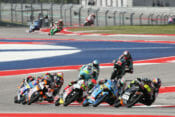It’s the only twin-cylinder superbike in Ducati’s ranks, but is the 959 upgrade, known as the Panigale V2, something special?
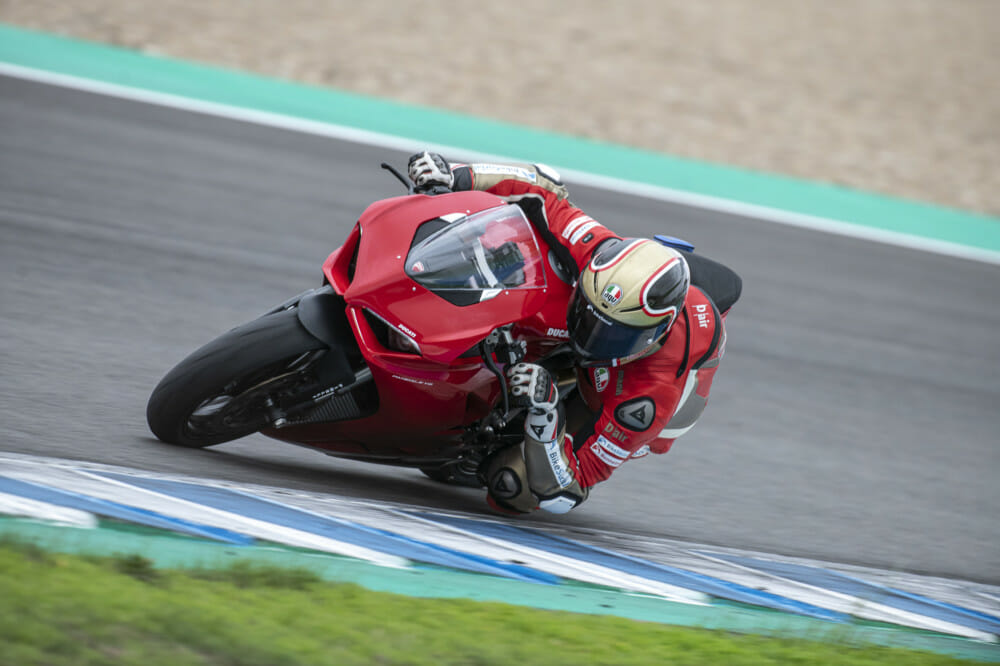
By Michael Mann, Web Editor, BikeSocial by Bennetts www.bikesocial.co.uk
Photography by Milagro
Remember the Ducati 748 unveiled way back in 1994? Worryingly that’s a quarter of a century ago. <insert sighing emoji>. As the smaller version of the 916, it marked the foundation of the “super mid” category, as labeled by the Italian marque, and it was regarded as the better bike to ride. The pattern continued with the 750SS and 749 being easier to get along with than the 900SS and 999, respectively. The genetics of that 748 can be traced to the Panigale V2, the modern-day incumbent of that title, a swift and accomplished modern-day sport bike inheriting 25 years of evolution.
The new $16,495 Panigale V2 is the last remaining twin-cylinder superbike in Ducati’s ranks and replaces the outgoing the 955cc “Panigale 959” with a raft of updates to the engine, aerodynamics, suspension and, perhaps most importantly, the electronics.
On behalf of both BikeSocial and Cycle News, I’ve been putting the new V2 through its paces at the MotoGP circuit in Jerez, Spain.
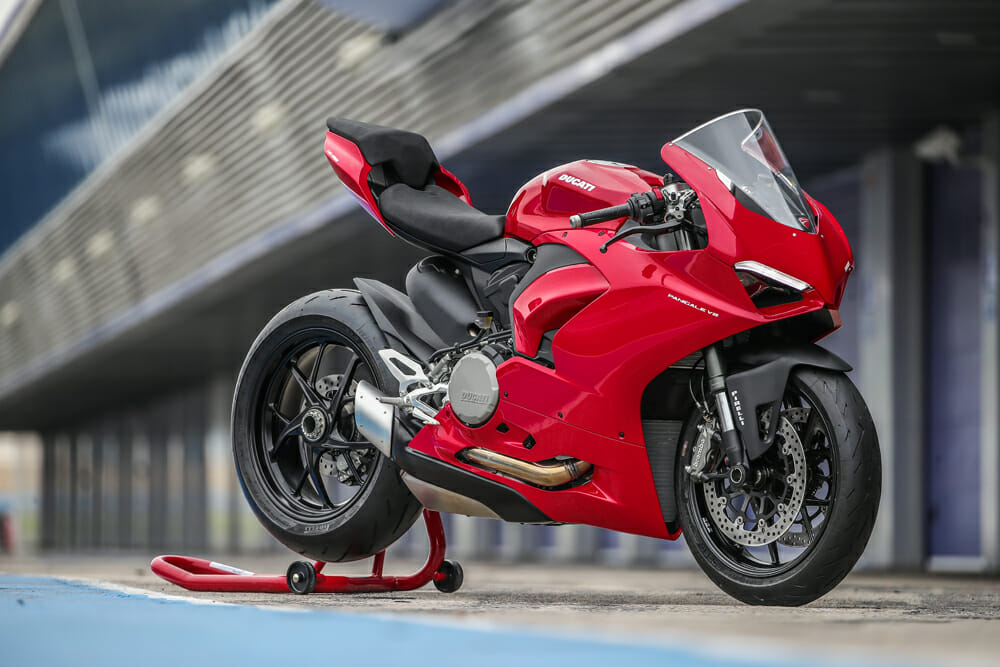
2020 Ducati Panigale V2 Review | Absolutely Not a V4
The Desmosedici Stradale motors from the Panigale V4 are big, booming humdingers designed to defy wind resistance and propel its operator at silly speeds both in a straight line, and, courtesy the overwhelmingly brilliant electronics package, around the twisty bits, too. The Superquadro 90-degree V-twin also comes complete with a swath of its own sensory snippets to emphasize that you’re still dealing with some premium and desirable Italian engineering.
On the face of it, most of the “Baby Panigale” is a pimped 959, though dig a little deeper, and the changes are wide-ranging. New styling matches the Panigale V4; there’s a double-layer fairing, new side panels and a redesigned tail, as well as LED headlights tucked into exaggerated air intakes that are now synonymous to the range.
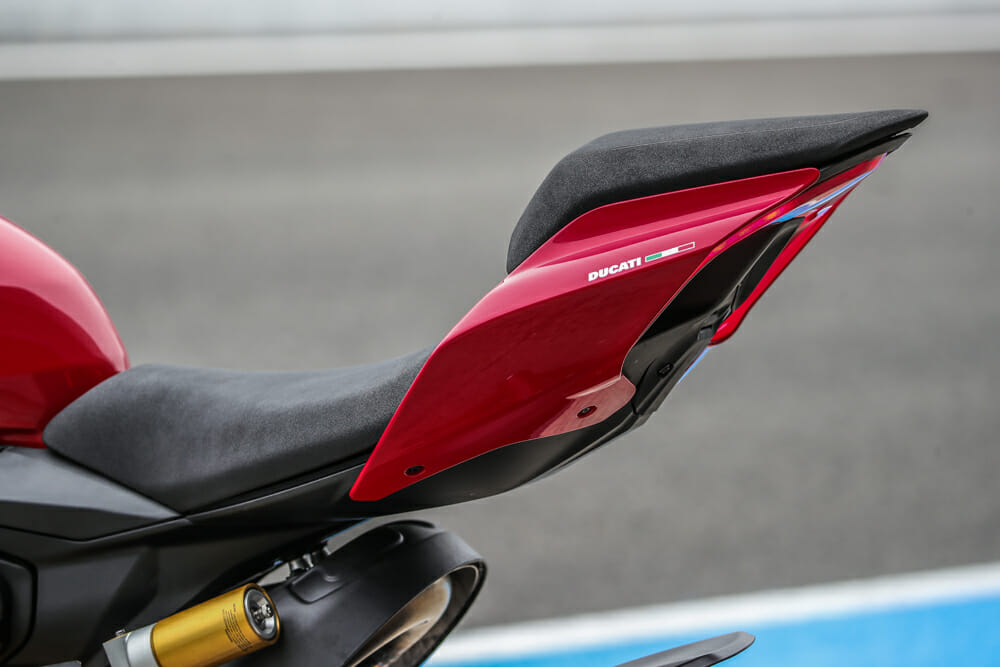
You can’t help but notice the single-sided swingarm that shows off the rear wheel—and is sure to divide opinion. Styling-wise, the stubby exhaust helps, as it’s a vast improvement compared to the over-and-under design from the 959.
Power is up five horsepower to 155 at 10,750 rpm, while torque rises by about 1.5 ft-lbs. to 76.7 at 9000 rpm. It’s not as eye-shudderingly ferocious as a Panigale V4, but of course, it’s down some 50 Italian horses, although that makes it plenty more manageable out of the final corner at Jerez, for example, which is a slow second-gear hairpin where you can run wide over the kerbs on the exit and keep the throttle pinned. Otherwise, the power delivery suits the chassis so well.
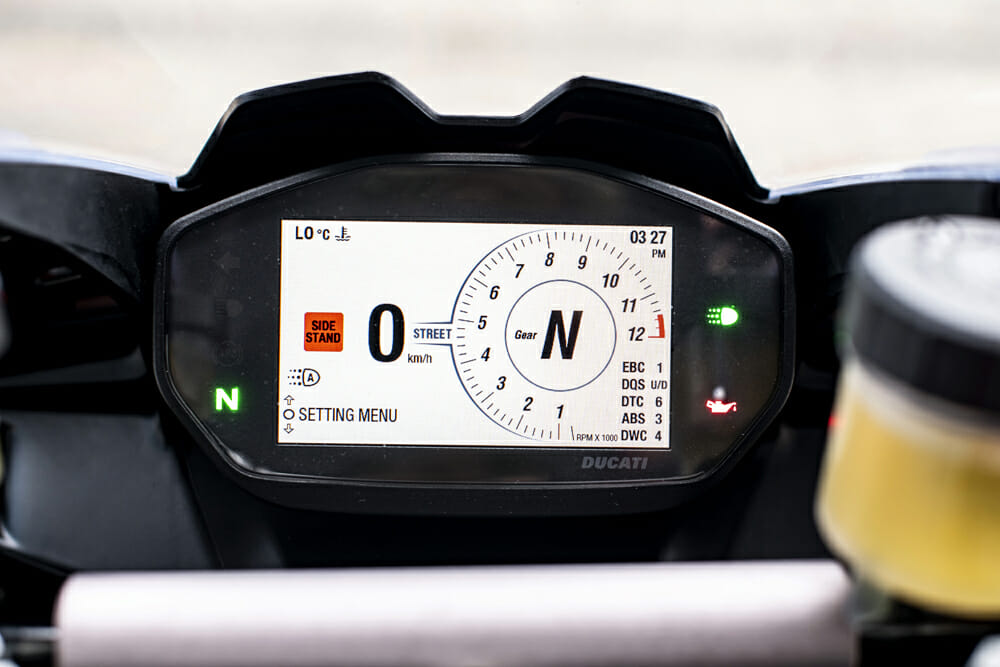
2020 Ducati Panigale V2 Review | Engine, Gearbox and Exhaust
The rugged, raspy 955cc twin-cylinder heartbeat has revised intake ducts to improve efficiency and four new injectors (two per cylinder), but its compact design means the dimensions of the bike are neat, so while the seat height is up there at 33.0 inches, the step-over remains narrow.
Speaking of compact, impressively, despite the neater exhaust routed entirely underneath the engine with two larger catalytic convertors inside the silencer, the Panigale now meets Euro 5 emissions limits, and what’s more, Ducati has simultaneously increased its performance without resorting to expanding the engine capacity. The higher the revs, the happier the V2 seems.
Driving hard out of a slower corner from 7000 rpm with the twist grip pulled right back, the revs soar towards that peak power figure at 10,750 rpm in harmony with the soulful soundtrack. Like a game of chicken, how late can you leave the marauding rev counter before it knocks on the limiter, and instead find the perfect cue to give the quickshifter a nudge. And that’s all the gear lever needs, just like my courting technique once was, gentle but direct.
Down the six-speed gearbox at the end of either of the two Jerez straights and the newly fitted auto-blipper shifts you back from fifth to second in little more time than it takes to blink.
Power delivery is smooth, even in Race mode, and as the corners tick by, the more faith I put into the mechanical grip, initially believing that even a hint of ham-fistedness may cause a wobble or worse. Then in the faster, constant radius turns in third or fourth, I have so much confidence in the stability of the V2, which demonstrates a highly efficient working relationship between engine, electronics, chassis and tires.
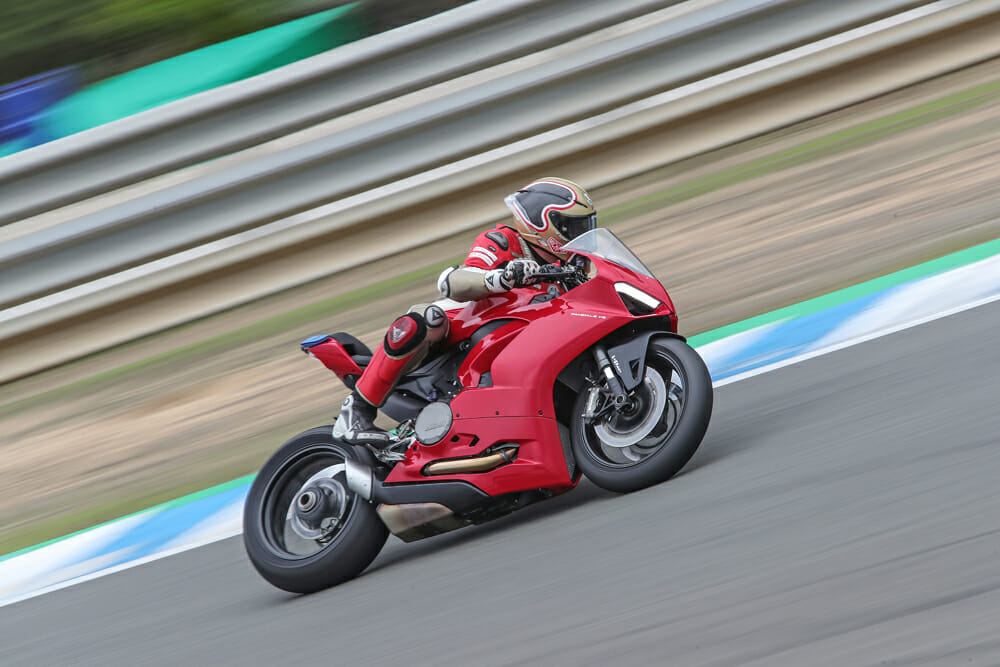
2020 Ducati Panigale V2 Review | Handling, Suspension, Chassis and Weight
Showa BPF forks and a Sachs rear shock and steering damper match the 959 specs, but there are tweaks to the geometry to improve the handling with a focus on-road use. Specifically, there’s a new setting for the front suspension while the rear preload is decreased, yet the shock’s linkage makes it two millimeters longer. A new longer and thicker seat has an increased seat height by 0.3 inches up to 33.0 inches and offers plenty of wiggle room, allowing you to push back in the saddle under braking for more even weight spread.
Suspension is set somewhere near track expectations, although a trackday regular might wish to firm up the front. Corner speed and agility is where this bike lives, carrying its 441-pound wet weight well. The distribution of which is forward bias by 52 percent (up by one percent over the 959) in theory to assist with turn-in speed and devilishly good it is, too. Lighter wheels would make it even more arrow sharp, but that’s by no means a gripe of the V2. Quick turning and dynamic handling is evident as I barrel over from right-to-left out of turns two and into three, then a quick squirt on the gas and into fourth gear and turn four for the long, slightly uphill left which seems to gets faster the further over you lean and it’s one of those corners you look forward to getting to on the next lap. The balance plus consistent and predictive nature of its agility is one of the best from a production motorcycle available today.
Ably assisting the terrific geometry and steering ability are the Pirelli tires. The production model will have Diablo Rosso Corsa 2, but on track today, we’re running Supercorsas, mainly to emphasize handling.
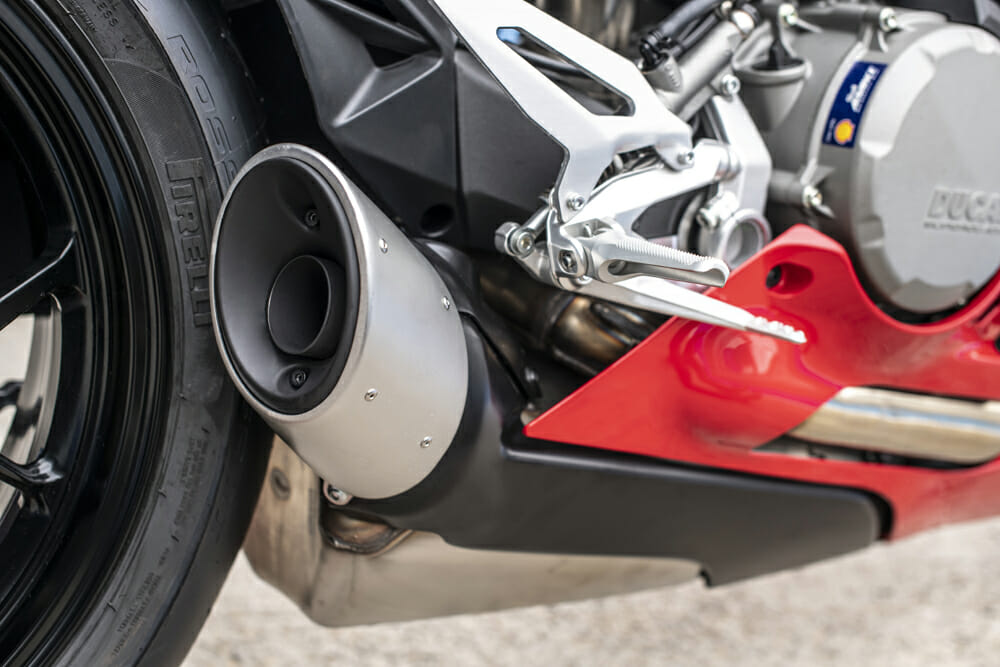
2020 Ducati Panigale V2 Review | Brakes
Running into a corner hot has never been so manageable because the engine braking exquisiteness and the twin 320mm discs carefully harnessed by the M4.32 four-piston Brembo’s and Cornering ABS EVO all come together with plenty of assistance for the Showa forks to provide some refined braking performance. The initial bite was superb with consistent pressure, and they offered the necessary confidence to get the bike turned even while still grabbing some of the right-hand lever. At Jerez, there’s plenty of fast corners where a dab of brake helped shave enough speed to tip the bike in while retaining momentum while the heavier braking zones into turns one and six were never in doubt of being overshot.
Slipper clutch-assisted downshifts could be aggressive, but the bike remained calm and unflustered, giving plenty of opportunities to run some massive corner speed, which is required on this track and what this bike laps up. Not once did the newly upgraded ABS system interfere, instead, it kept the rear wheel on the ground under hard braking and even encouraged a little excitable slide-by-brake action.
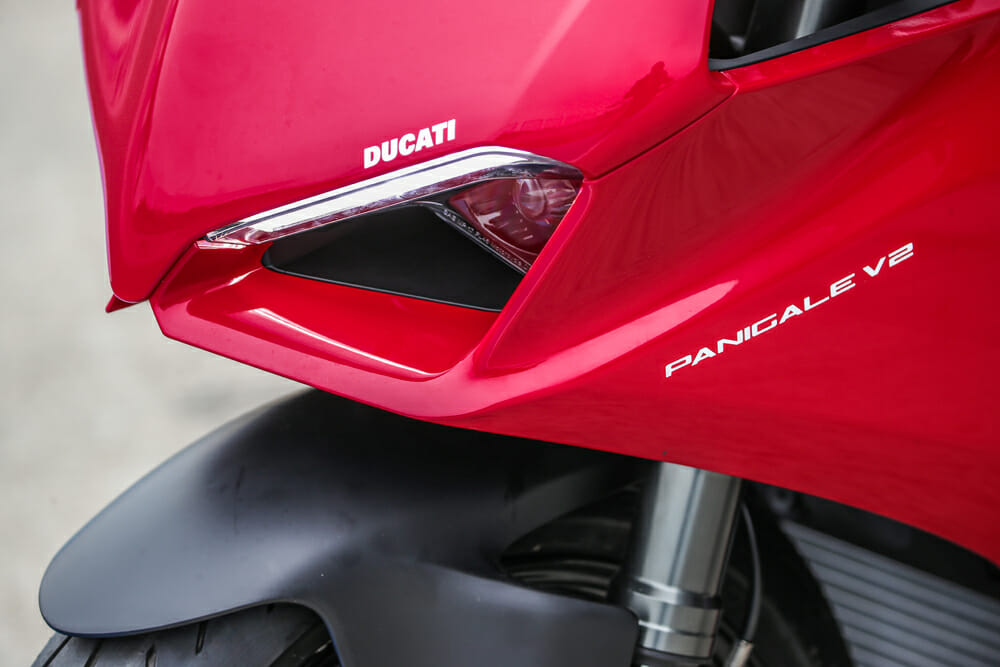
2020 Ducati Panigale V2 Review | Rider Aids and Electronics
As is the norm, there’s a huge armory of electronics on offer, and they too have had an upgrade. The six-axis Bosch IMU is the brains behind the operation and via the three riding modes (Street, Sport and Race)—all of which are customizable—the likes of engine power mode, the latest evolution of Ducati’s traction control, wheelie control, quick shifter (both up and down), cornering ABS and engine brake control provide a sophisticated safety and performance package. It’s all operational via the new full-color TFT display and the left-side switchgear.
While there’s no cruise control or heated grips, the V2’s impressive suite of electronics is sublime. I barely felt traction control interfering with my entertainment, which coaxed me into harassing the throttle earlier and harsher at every opportunity, but the Ducati wasn’t for moving. I spent the dry sessions in Race mode with DTC at level two of eight, which seemed about right for my pace—this latest evolution of the system was derived from the 2018 MotoGP bike and is deliberately designed to allow for more grip out of the corners.
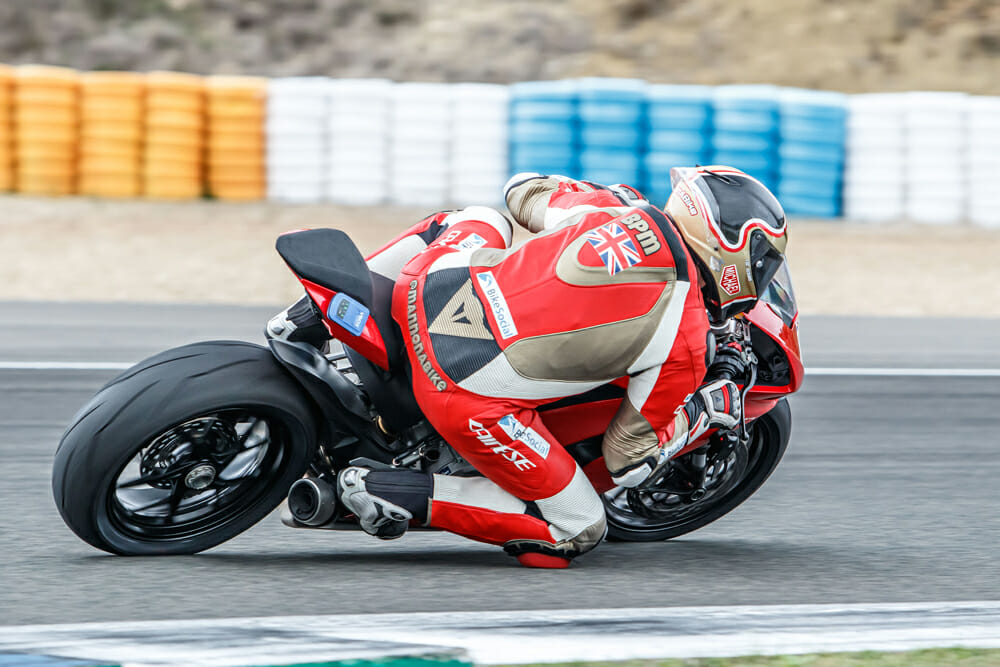
2020 Ducati Panigale V2 Review | Verdict
On paper, we’re looking at a $16.5k for a bike “just” 155 horsepower, but what Ducati has on offer here is a smooth handling and beautiful looking machine fully equipped for the track, the commute or the Sunday backroad blast. The electronics, power increase and chassis refinements have made it a more enjoyable bike to ride, while the aesthetics are down to personal preference.
Without a doubt, it’d be user-friendly around town yet still armed and dangerous when it comes to track use. Ducati’s sole twin-cylinder sportbike offers a more-than-substantial alternative to those loony machines with double the cylinders and 30 percent more power.
It’s easy to manage, flatters the rider, and is less intimidating than the Panigale V4 and has a reasonable price tag for a premium model that is every bit as enjoyable as riding its 1103cc sibling. The Panigale V2 retains the charm and riding characteristics synonymous with a Ducati superbike but in a more manageable package. Whether you’re making your way through the power ranks looking for something faster and more refined to invest in after a 600, or as an alternative to a larger, power-laden yet comfort-zapping bike, the lip-lickingly luscious V2 is well worth a test ride.
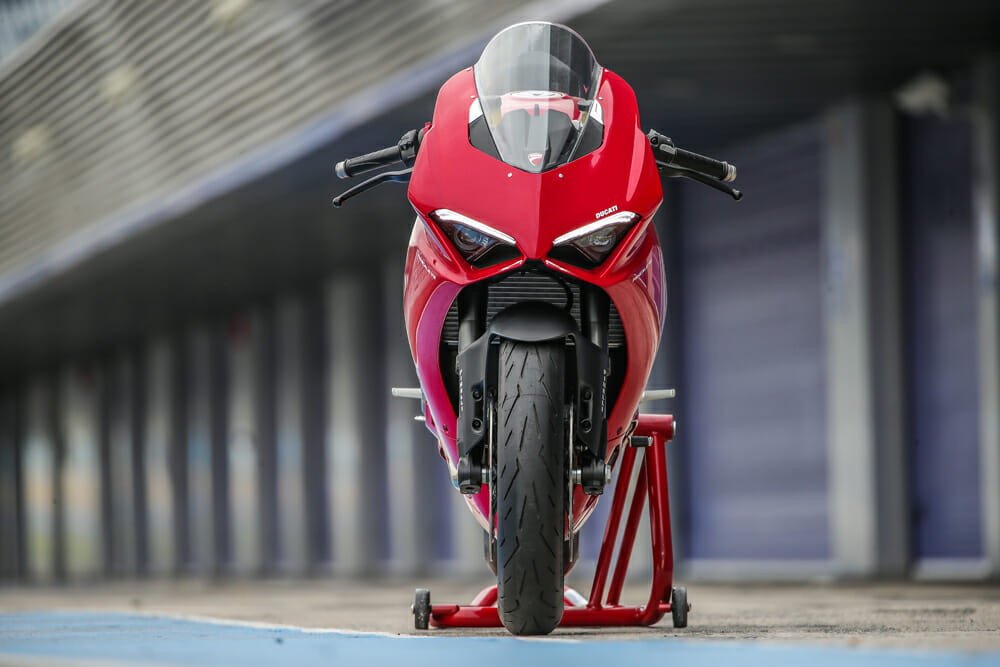
2020 Ducati Panigale V2 Specifications
| MSRP: | $16,495 |
| Engine: | Superquadro 90° V2, 4 valves per cylinder, Desmodromic, liquid-cooled |
| Displacement: | 955cc |
| Bore x stroke: | 100 x 60.8mm |
| Horsepower (claimed): | 155 hp at 10,750 rpm |
| Torque (claimed): | 76.7 ft.-lbs. at 9000 rpm |
| Compression ratio: | 12.5:1 |
| Fuel system: | EFI system, twin injectors per cylinder, full ride-by-wire elliptical throttle bodies |
| Exhaust: | 2-1-2-1 system, with two catalytic converters and two lambda probes |
| Transmission: | 6-speed with Ducati Quick Shift (DQS) up/down EVO 2 |
| Chassis: Monocoque Aluminum | |
| Front suspension: | 43mm, fully adjustable Showa BPF fork |
| Rear suspension: | Fully adjustable Sachs shock, aluminum single-sided swingarm |
| Front brake: | Dual 320mm semi-floating discs, radially mounted Brembo Monobloc, M4.32 4-piston calipers with Cornering ABS EVO |
| Rear brake: | 245mm disc, 2-piston caliper with Cornering ABS EVO |
| Front tire: | Pirelli Diablo Rosso Corsa II 120/70 ZR17 |
| Rear tire: | Pirelli Diablo Rosso Corsa II 180/60 ZR17 |
| Rake: | 24° |
| Trail: | 3.7 in. |
| Wheelbase: | 56.5 in. |
| Seat height: | 33.0 in. |
| Fuel capacity: | 4.5 gal. |
| Weight (curb, claimed): | 441 lbs. |
| Color: | Red |
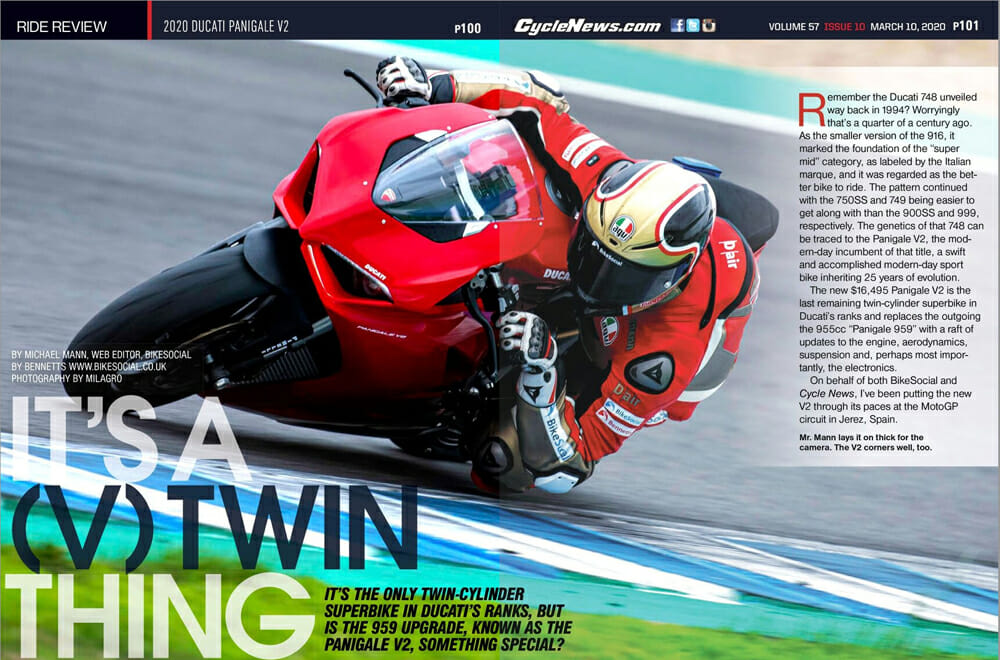
Click here to read this in the Cycle News Digital Edition Magazine.
Click here for the latest Cycle News Sportbike motorcycle reviews and news.
Click here for more Ducati motorcycle reviews and news.
